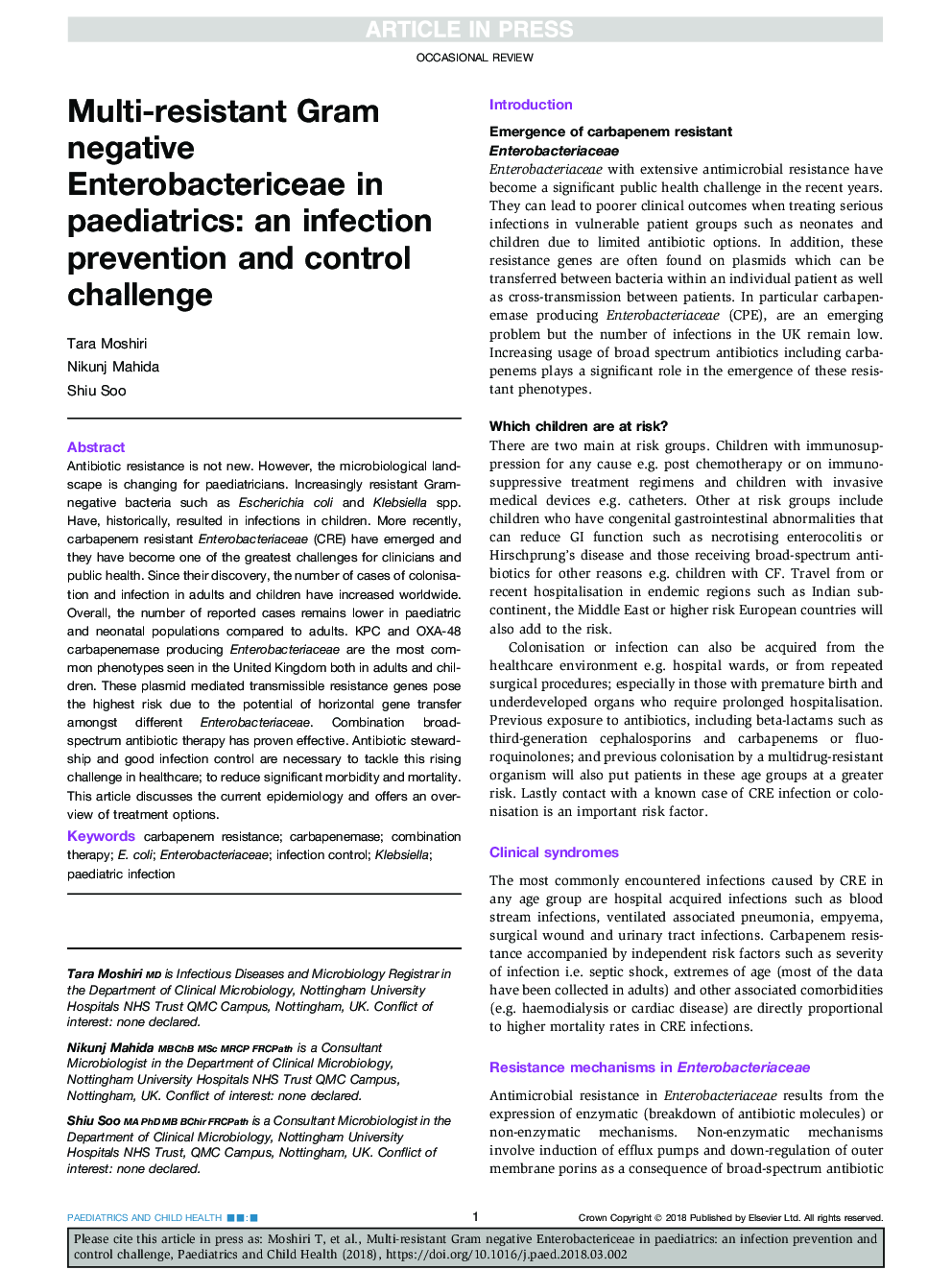| Article ID | Journal | Published Year | Pages | File Type |
|---|---|---|---|---|
| 8813110 | Paediatrics and Child Health | 2018 | 5 Pages |
Abstract
Antibiotic resistance is not new. However, the microbiological landscape is changing for paediatricians. Increasingly resistant Gram-negative bacteria such as Escherichia coli and Klebsiella spp. Have, historically, resulted in infections in children. More recently, carbapenem resistant Enterobacteriaceae (CRE) have emerged and they have become one of the greatest challenges for clinicians and public health. Since their discovery, the number of cases of colonisation and infection in adults and children have increased worldwide. Overall, the number of reported cases remains lower in paediatric and neonatal populations compared to adults. KPC and OXA-48 carbapenemase producing Enterobacteriaceae are the most common phenotypes seen in the United Kingdom both in adults and children. These plasmid mediated transmissible resistance genes pose the highest risk due to the potential of horizontal gene transfer amongst different Enterobacteriaceae. Combination broad-spectrum antibiotic therapy has proven effective. Antibiotic stewardship and good infection control are necessary to tackle this rising challenge in healthcare; to reduce significant morbidity and mortality. This article discusses the current epidemiology and offers an overview of treatment options.
Keywords
Related Topics
Health Sciences
Medicine and Dentistry
Perinatology, Pediatrics and Child Health
Authors
Tara Moshiri, Nikunj Mahida, Shiu Soo,
